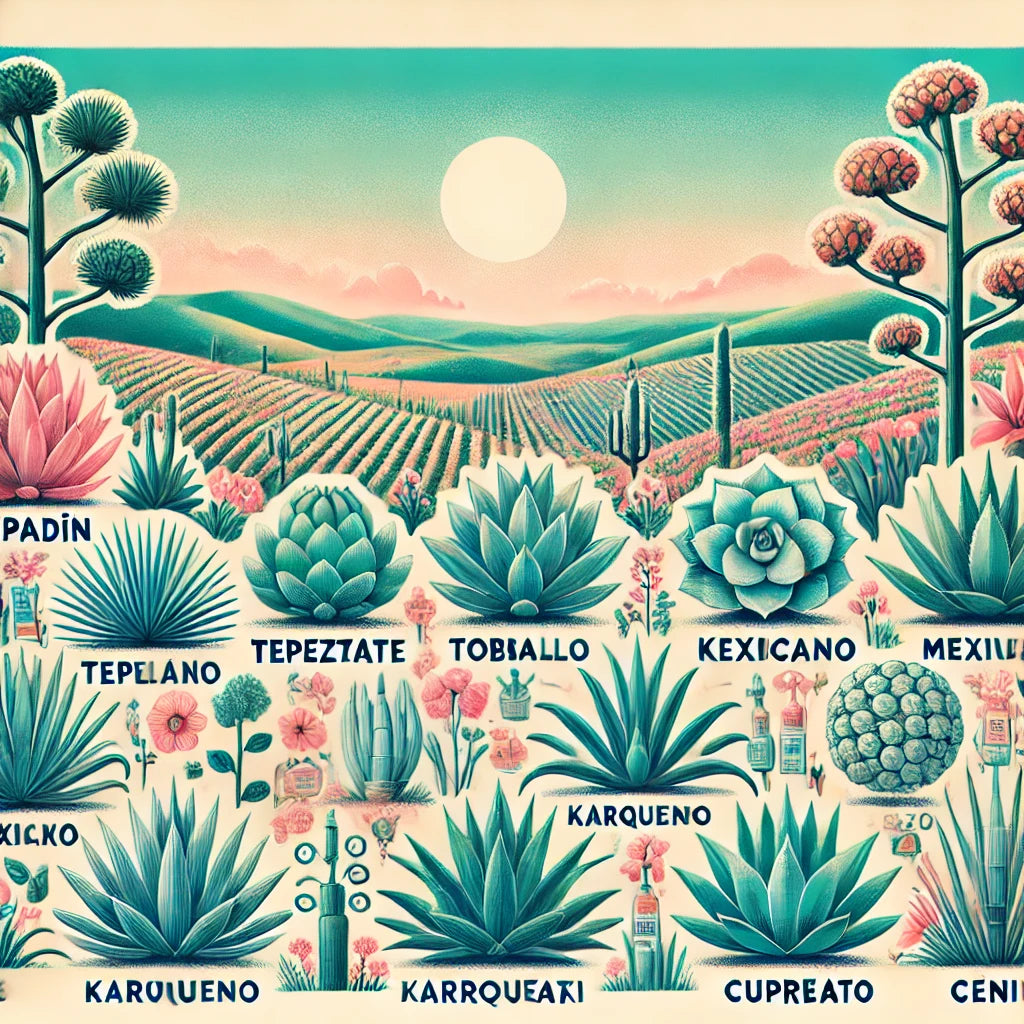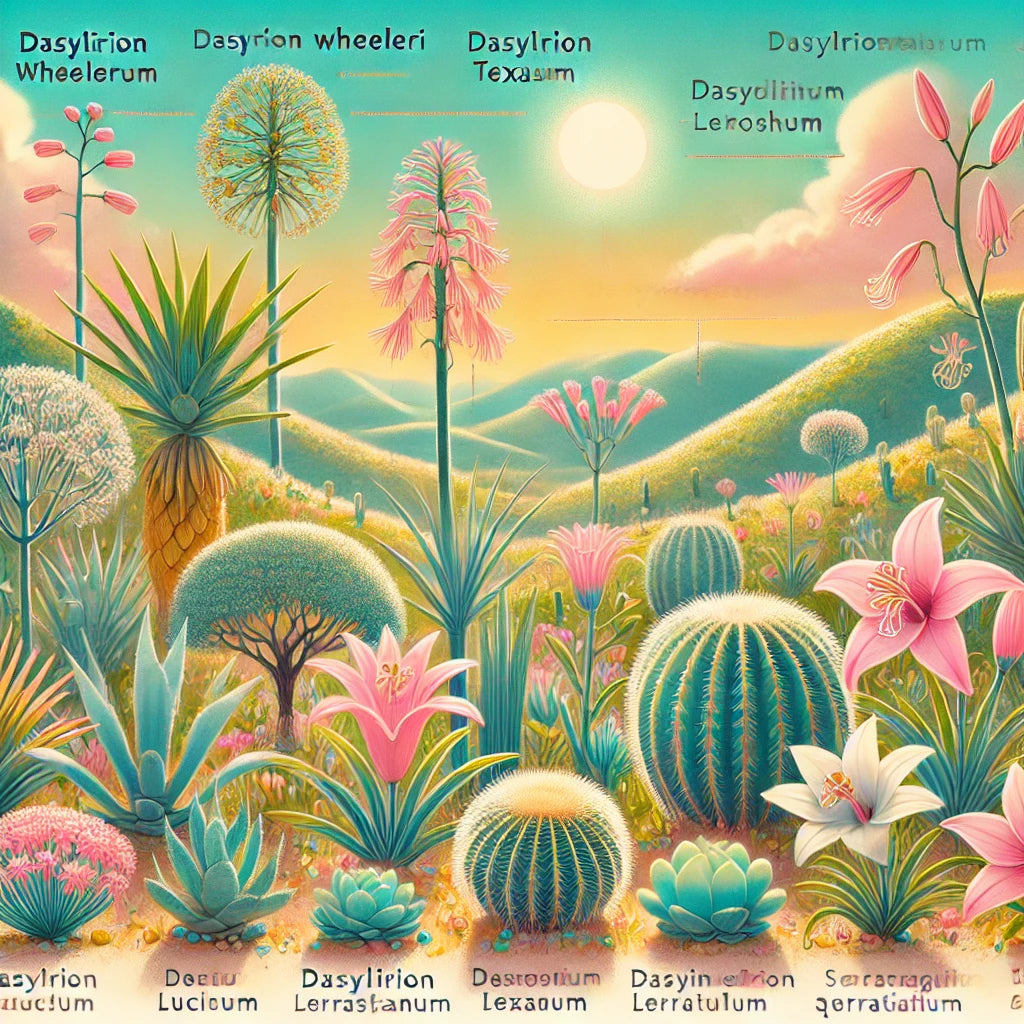
Mezcal 101 : Exploring Agave Varieties and Their Cultural Significance
Introduction to Mezcal and Agave Varieties
Hi there, I'm Manny Vides Jr., mixologist and co-owner of Dirty D. If you're anything like me, you probably appreciate the intricate flavors and rich heritage that mezcal brings to the table.
Mezcal is an extraordinary spirit, deeply rooted in Mexican culture, and its diversity is largely thanks to the various types of agave used in its production.
Join me on this journey as we explore the different agave varieties used to make mezcal, along with regional harvesting techniques, transformation processes, aging methods, and their unique cultural significance and flavor profiles. Let's dive in!
Espadín (Agave angustifolia)
Espadín is the backbone of the mezcal industry, making up about 80% of all mezcal production. This agave type is incredibly versatile and is often the first type people encounter when they start exploring mezcal.
Regional Harvesting and Transformation Techniques
Espadín is primarily grown in Oaxaca, although it can be found in other states like Guerrero and Durango. The agave is typically harvested at 7-10 years old, when its sugar content is at its peak. Jimadores (agave farmers) use a specialized tool called a coa to harvest the piñas (hearts of the agave). These piñas are then roasted in underground pits lined with stones, which imparts a smoky flavor characteristic of mezcal.
Aging Techniques
Espadín mezcal can be enjoyed joven (unaged) or aged in barrels to create reposado (aged 2-12 months) and añejo (aged over a year) varieties. The aging process adds layers of complexity, introducing notes of vanilla, caramel, and oak.
Cultural Significance and Flavor Profile
Espadín is often considered the workhorse of mezcal production. Its adaptability and high yield make it a favorite among producers. The flavor profile of Espadín mezcal is typically sweet and vegetal, with notes of tropical fruit, roasted agave, and a hint of smoke.
Distilleries Using Espadín
- Del Maguey
- El Jolgorio
- Rey Campero
Tepeztate (Agave marmorata)
Tepeztate is one of the most revered and rare agave species used in mezcal production. Its long maturation period and unique growing conditions make it a true gem.
Regional Harvesting and Transformation Techniques
Tepeztate thrives in rocky, mountainous regions, often clinging to cliffsides. Harvesting this agave is labor-intensive, as it can take up to 35 years to mature. Once harvested, the piñas are roasted, crushed, and fermented, similar to other mezcals, but the extended maturation period allows Tepeztate to develop deep, complex flavors.
Aging Techniques
Tepeztate mezcal is typically enjoyed joven to fully appreciate its natural complexity, although some distilleries experiment with aging. The aging process can mellow the intense flavors while adding depth.
Cultural Significance and Flavor Profile
Tepeztate is often seen as the pinnacle of mezcal craftsmanship. Its flavor profile is earthy and vegetal, with notes of tropical fruit, herbs, and a distinctive minerality. The cultural significance of Tepeztate mezcal lies in its rarity and the skill required to harvest and produce it.
Distilleries Using Tepeztate
- Mezcal Vago
- Del Maguey
- Real Minero
Tobalá (Agave potatorum)
Tobalá is often referred to as the "King of Mezcals" due to its rich, complex flavors and its reputation as a wild agave species.
Regional Harvesting and Transformation Techniques
Tobalá grows best in high-altitude regions with rocky soil. It is typically harvested from the wild, although cultivation efforts are increasing. Tobalá piñas are smaller than other agaves, but they are packed with intense flavors. The traditional roasting, crushing, and fermentation process is used to produce Tobalá mezcal.
Aging Techniques
Like Tepeztate, Tobalá mezcal is usually enjoyed joven to showcase its natural flavors. Some distilleries may age Tobalá mezcal, but it is less common due to the delicate nature of its flavor profile.
Cultural Significance and Flavor Profile
Tobalá holds a special place in the hearts of mezcal enthusiasts and producers alike. Its flavor profile is floral, fruity, and slightly spicy, with a rich, creamy texture. Tobalá's cultural significance is tied to its wild nature and the traditional methods used to harvest and produce it.
Distilleries Using Tobalá
- Real Minero
- El Jolgorio
- Rey Campero
Mexicano (Agave rhodacantha)
Mexicano is a large, striking agave known for its vivid green leaves and robust flavor profile.
Regional Harvesting and Transformation Techniques
Mexicano is primarily harvested in Oaxaca, where it thrives in the region's fertile soil. It is typically harvested at 8-12 years old. The piñas are roasted, crushed, and fermented using traditional methods, which bring out the agave's bold flavors.
Aging Techniques
Mexicano mezcal can be enjoyed joven or aged. Aging Mexicano mezcal adds complexity and depth, introducing notes of caramel, oak, and vanilla.
Cultural Significance and Flavor Profile
Mexicano is celebrated for its smooth, rich flavor profile. It is often described as fruity and smoky, with a touch of anise. The cultural significance of Mexicano mezcal lies in its unique flavor and the traditional methods used to produce it.
Distilleries Using Mexicano
- Mezcal Vago
- Real Minero
- Los Nahuales
Karwinskii (Agave karwinskii)
Karwinskii agaves are known for their distinctive appearance and the wide variety of mezcals they produce.
Regional Harvesting and Transformation Techniques
Karwinskii agaves are primarily harvested in Oaxaca. They are unique in that their piñas grow above ground, resembling long, narrow logs. These agaves are harvested at 10-15 years old and are roasted, crushed, and fermented using traditional methods.
Aging Techniques
Karwinskii mezcals are usually enjoyed joven to highlight their herbal, vegetal flavors. However, some distilleries do age Karwinskii mezcal, adding complexity to its profile.
Cultural Significance and Flavor Profile
Karwinskii mezcals are known for their "green" herbal nose and flavors of roasted vegetables, often with a prominent note of peanut. The cultural significance of Karwinskii mezcals lies in their unique growth patterns and the traditional methods used to produce them.
Distilleries Using Karwinskii
- Real Minero
- Del Maguey
- Pierde Almas
Arroqueño (Agave americana)
Arroqueño is a majestic and large agave known for its robust and complex flavors.
Regional Harvesting and Transformation Techniques
Arroqueño is typically found in Oaxaca and is harvested at 15-20 years old. These large agaves can weigh up to 450 pounds. The piñas are roasted in traditional earthen pits, crushed using tahonas (stone mills), and fermented in wooden vats, which adds to the complexity of the mezcal.
Aging Techniques
While Arroqueño mezcal is often enjoyed joven to showcase its natural complexity, aging can add even more depth to its flavor profile. Aged Arroqueño mezcals feature notes of oak, caramel, and spices.
Cultural Significance and Flavor Profile
Arroqueño mezcals are celebrated for their strong cooked-agave flavor, layered with herbs and spices. The cultural significance of Arroqueño lies in its size, rarity, and the traditional methods required to produce it.
Distilleries Using Arroqueño
- El Jolgorio
- Mezcalosfera
- Rey Campero
Cupreata (Agave cupreata)
Cupreata is a popular agave in Guerrero, known for its distinct flavor and versatility in mezcal production.
Regional Harvesting and Transformation Techniques
Cupreata thrives in the mountainous regions of Guerrero. It is typically harvested at 12-15 years old. The piñas are roasted in underground pits, crushed, and fermented in open-air wooden vats, which helps to develop its unique flavor profile.
Aging Techniques
Cupreata mezcal can be enjoyed joven or aged. Aging adds layers of complexity, introducing notes of vanilla, oak, and caramel.
Cultural Significance and Flavor Profile
Cupreata is celebrated for its ripe tropical fruit flavors and earthy notes of black pepper and roasted poblano chile. The cultural significance of Cupreata mezcal lies in its regional specificity and the traditional techniques used to produce it.
Distilleries Using Cupreata
- Mezcal Amaras
- La Luna Mezcal
- Mezcal Neta
Cenizo (Agave durangensis)
Cenizo is a distinctive agave found primarily in Durango, known for its resilience and unique flavor profile.
Regional Harvesting and Transformation Techniques
Cenizo grows in the rugged terrains of southern Durango and parts of Zacatecas. It is harvested at 10-15 years old. The agave is roasted in underground pits, crushed using traditional methods, and fermented in wooden vats. This process imparts a unique character to the mezcal.
Aging Techniques
Cenizo mezcal is often enjoyed joven to highlight its natural flavors, but aging can add richness and complexity, with notes of oak and caramel.
Cultural Significance and Flavor Profile
Cenizo mezcals are known for their fruity, almost creamy texture, with hints of burnt caramel. The cultural significance of Cenizo mezcal lies in its adaptation to extreme weather conditions and the traditional techniques used to produce it.
Distilleries Using Cenizo
- Mezcal Derrumbes
- Mezcal Hacienda Oponguio
- Mezcal Kokoro
FAQ About Mezcal
What is mezcal?
Mezcal is a distilled alcoholic beverage made from any type of agave. It is known for its smoky flavor, which comes from the traditional roasting of agave piñas in underground pits.
How is mezcal different from tequila?
Tequila is a type of mezcal made specifically from the Blue Agave plant (Agave tequilana) and produced in designated regions of Mexico. Mezcal can be made from various types of agave and has a wider range of flavor profiles due to different production methods.
What are the main types of agave used in mezcal production?
Some of the main types of agave used in mezcal production include Espadín, Tepeztate, Tobalá, Mexicano, Karwinskii, Arroqueño, Cupreata, and Cenizo.
What is the difference between joven, reposado, and añejo mezcal?
Joven mezcal is unaged and bottled immediately after distillation. Reposado mezcal is aged for 2-12 months in wooden barrels, adding complexity and oak flavors. Añejo mezcal is aged for over a year, resulting in a richer and more complex spirit.
How should mezcal be served?
Mezcal is traditionally served neat, often with a slice of orange and sal de gusano (worm salt). It can also be used in cocktails, but its unique flavors are best appreciated when sipped slowly.
What are some popular mezcal cocktails?
Popular mezcal cocktails include the Mezcal Margarita, Mezcal Negroni, and the Smoky Paloma. These cocktails highlight mezcal's unique smoky flavor while balancing it with other ingredients.




